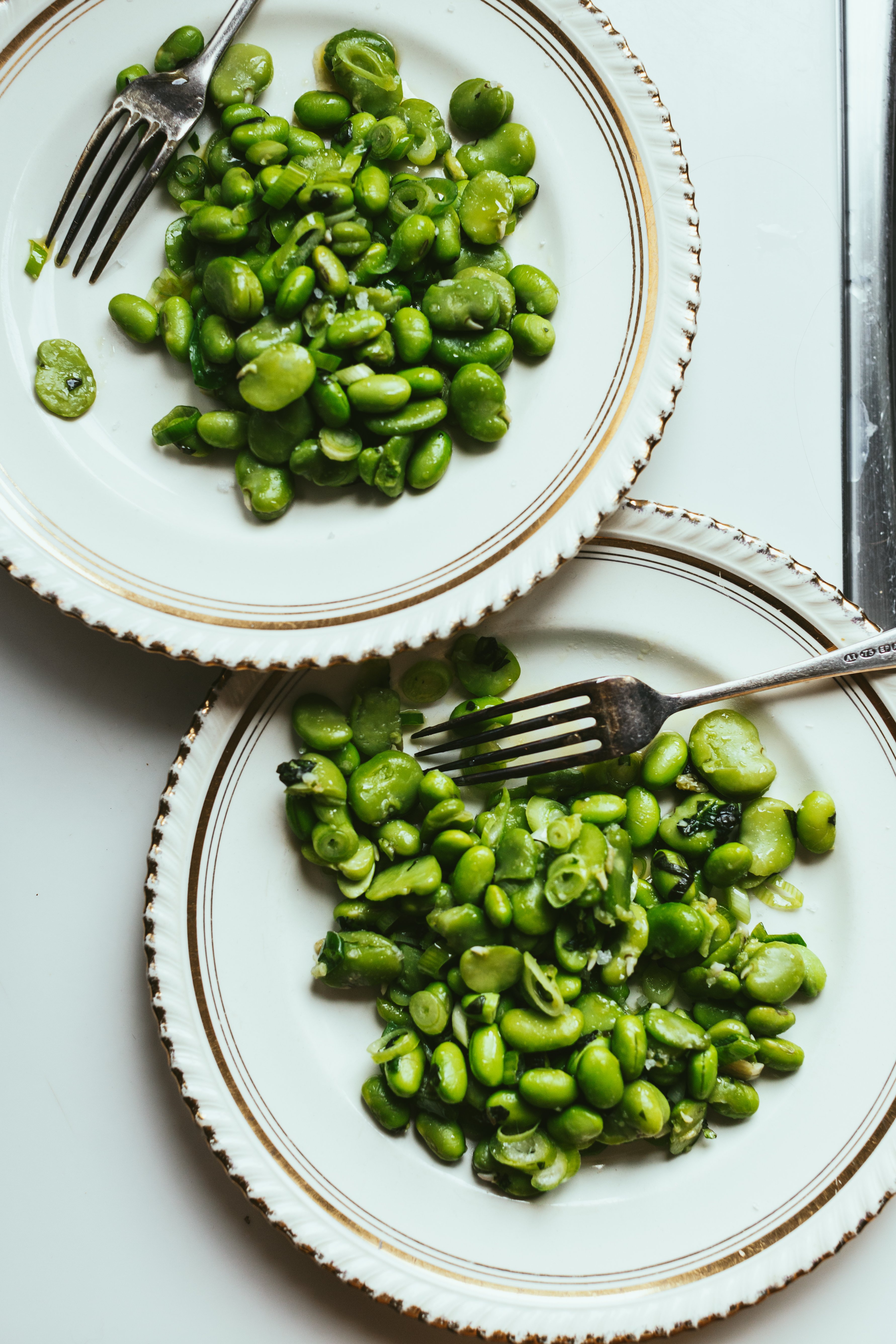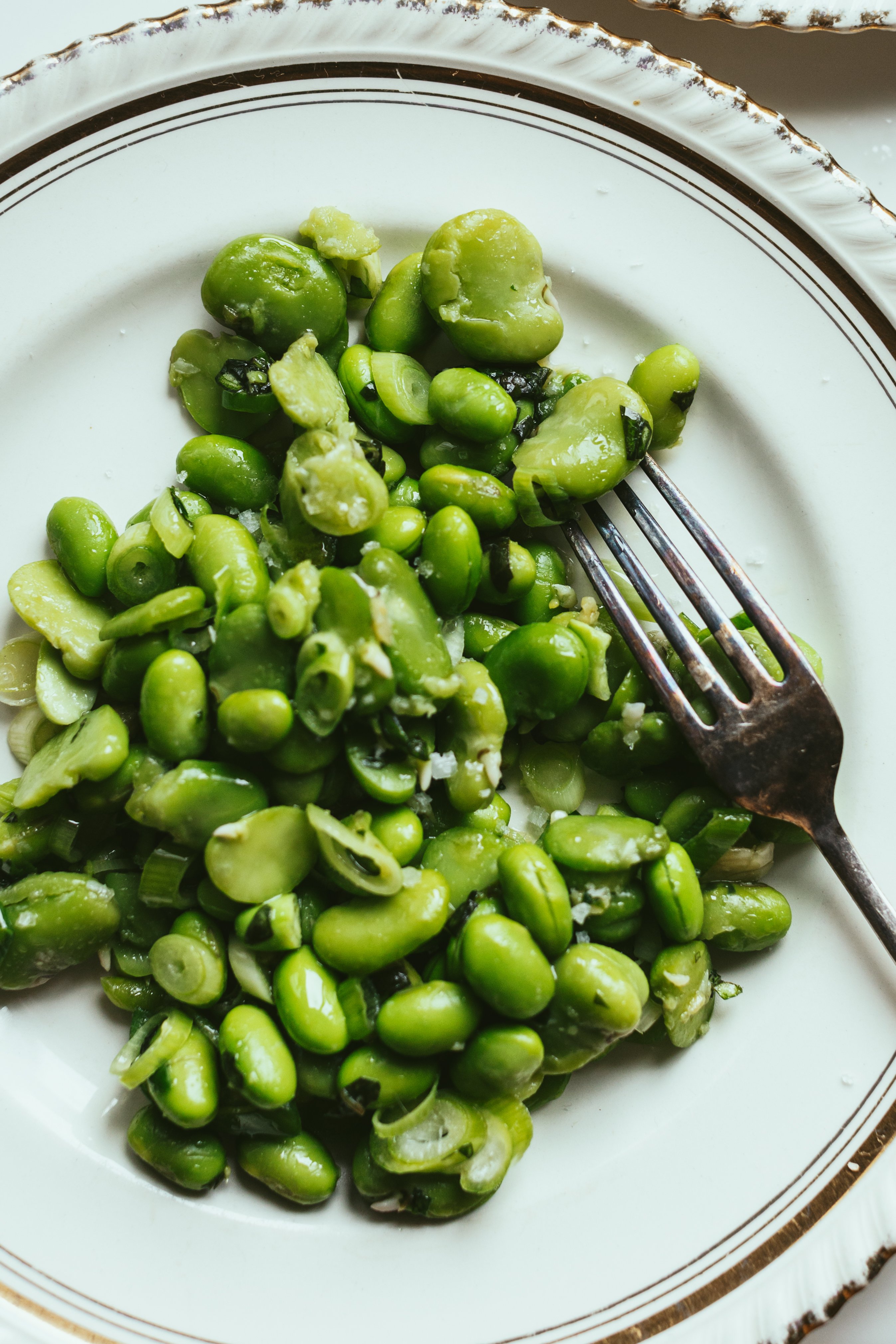Photography by Tracey Creed
Recipe by Amandine Paniagua and Tracey Creed
Words by Tracey Creed
Published December 29 2022
In a large (12-inch) skillet, heat the olive oil and garlic over medium heat.
When the garlic is just beginning to brown, add the fava and edamame beans, green onions, and salt to the skillet. Sauté until the green onions are wilted and have lost their raw bite, about three minutes.
Add the basil and sauté for just about one more minute, then turn off the heat and serve.
A marriage of freezer findings, green beans, garlic and shallots, this is an easy and vibrant side dish to toss together to enjoy alongside roasted potatoes or mashed with a green salad. For me, cooking is very much cravings, based on what I have in the fridge, what is seasonal and what I want to eat that day, and since this side sits in the refrigerator for a few days, it’s ideal for creating a vibrant leftovers plate too. I’ve enjoyed combining this dish alongside our borlotti bean dish lately.
I grew up on frozen veggies, and today, I still eat a lot of frozen peas and edamame beans. Major frozen veggie brands ran these ads throughout the 90s, highlighting the nutritional benefits of snap frozen ingredients. Bon Appetit wrote a piece on it, and the website features a raft of recipes utilising bags of frozen peas. I love fava, or broad beans and edamame, so this recipe became my contribution to the Internet.
And at the time of preparing and photographing this recipe, food prices in Aotearoa reached a 2008-high, 10.7 per cent higher compared with 2021. So for many, the choice between fresh and frozen became obvious for those seeking to reduce their food bill. It is also one approach that does not compromise your nutritional intake. Here I will run through why it is worth your while and dollars to add some frozen fava and edamame beans to your next grocery shop.
High in plant protein Given the current dilemmas with meat consumption, the state of farming, GMOs and climate impacts, diet and nutrition are equally fundamental to this conversation. If you are embracing the health and environmental benefits of eating more plants, fava beans are another whole food to your grocery list—13 grams per cup (170 grams).
Source of folate Technically a B Vitamin, folic acid helps your body produce blood cells. Maintaining adequate levels is vital and more so during pregnancy when getting the right amount of folate is essential, as it helps lower the risk of any neural tube defects—177 micrograms per cup (170 grams).
Source of fibre A one-two punch for the body—insoluble fibre works as a scrub brush, cleaning the gastrointestinal tract and ridding the body of excess oestrogen, inflammatory properties and metabolic waste. And soluble fibre feeds symbiotic bacteria to balance hormones and promote microbial diversity, aiding digestion and keeping cravings in check—9 grams per cup (170 grams).
High in plant protein A macronutrient “protein” comprises chains of organic compounds called amino acids. When these amino acids link up, they form the proteins your body needs to develop healthy tissues, make hormones, and satisfy hunger. And edamame beans are a complete protein containing all nine essential amino acids—18.4 grams per cup (160 grams).
High in Vitamin K Fat soluble, edamame contains significantly more Vitamin K in its phylloquinone form than mature soybeans. This vitamin helps produce various proteins required for blood clotting and forming healthy bone tissue. You achieve around 56% of the daily vitamin K intake—87 micrograms per cup (160 grams).
Source of calcium Plant foods offer plenty of this bone-strengthening, teeth-perfecting mineral. Much of the foods highest in calcium are from non-animal sources and without inflammatory triggers. Ensure you’re also supplementing with Vitamin D to boost calcium absorption—97.7 micrograms per cup (160 grams).



